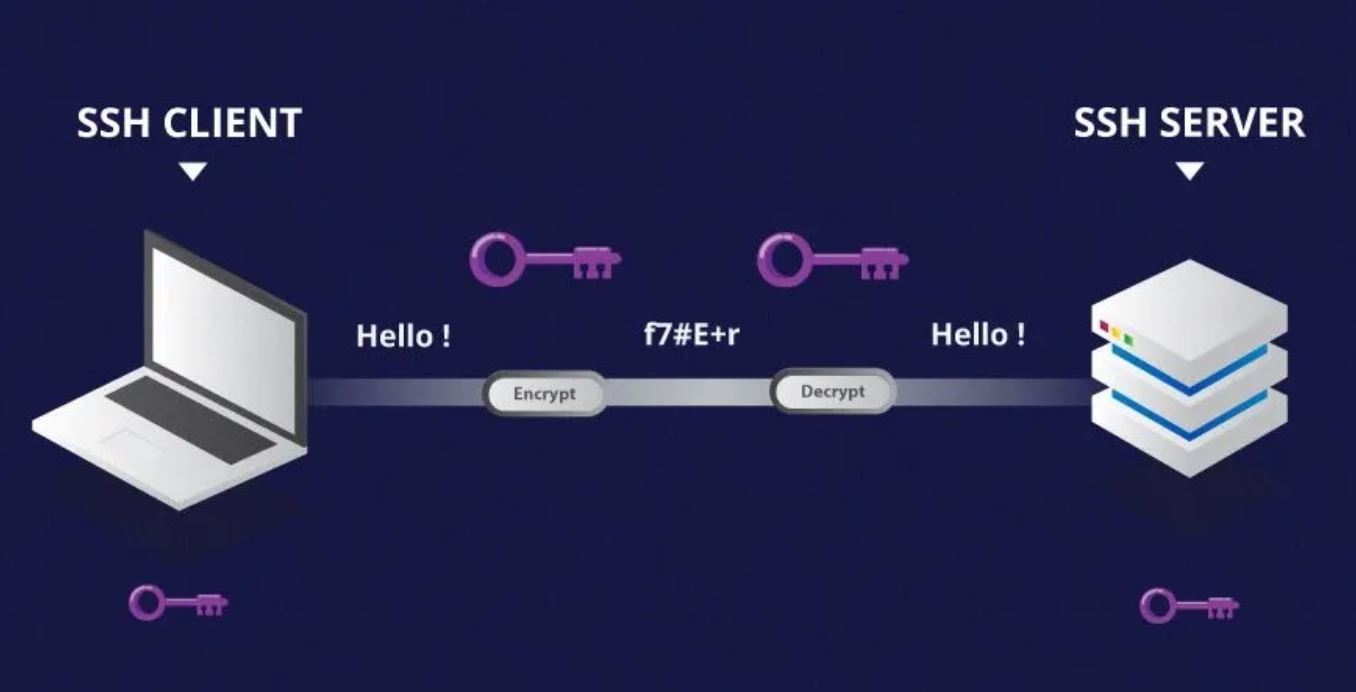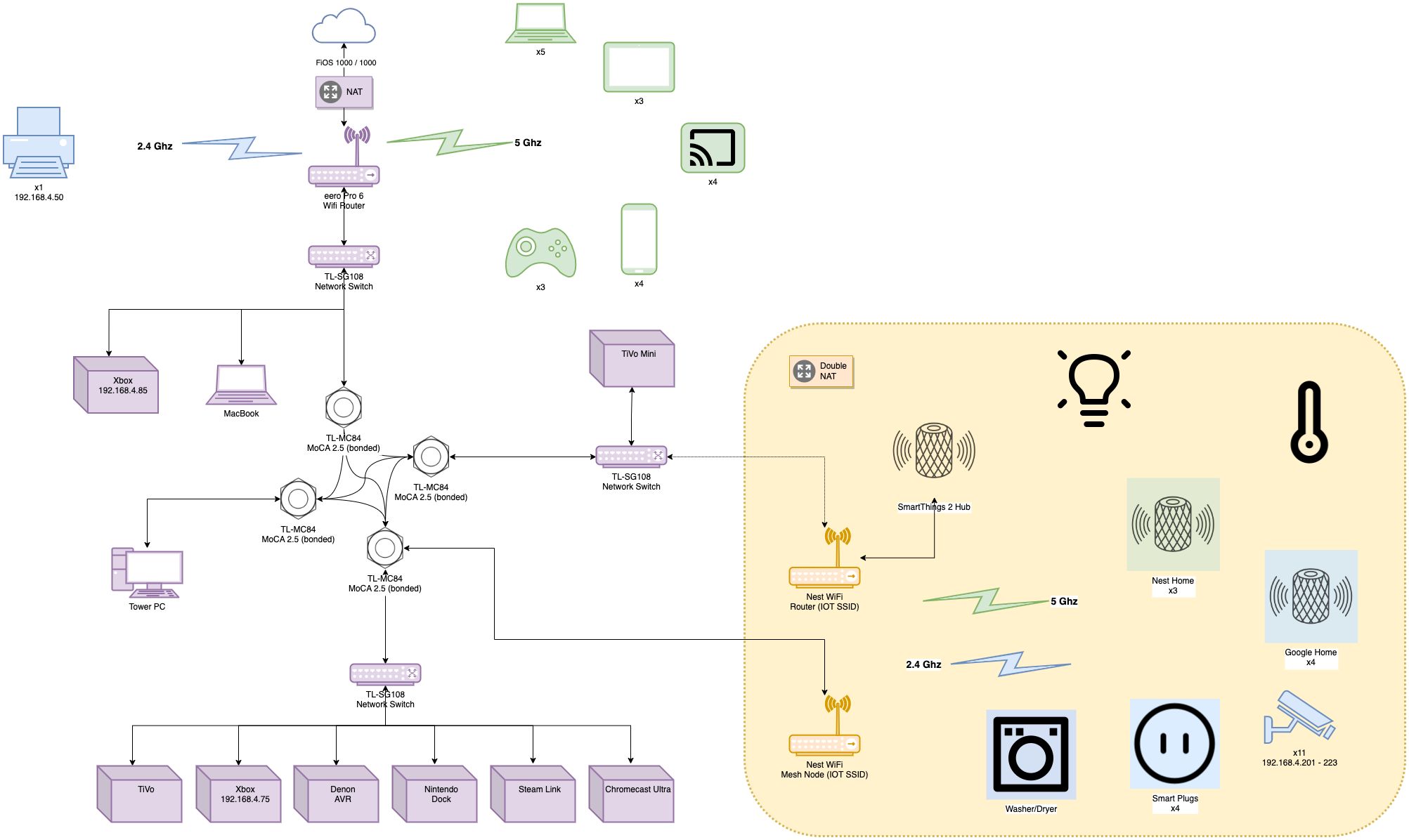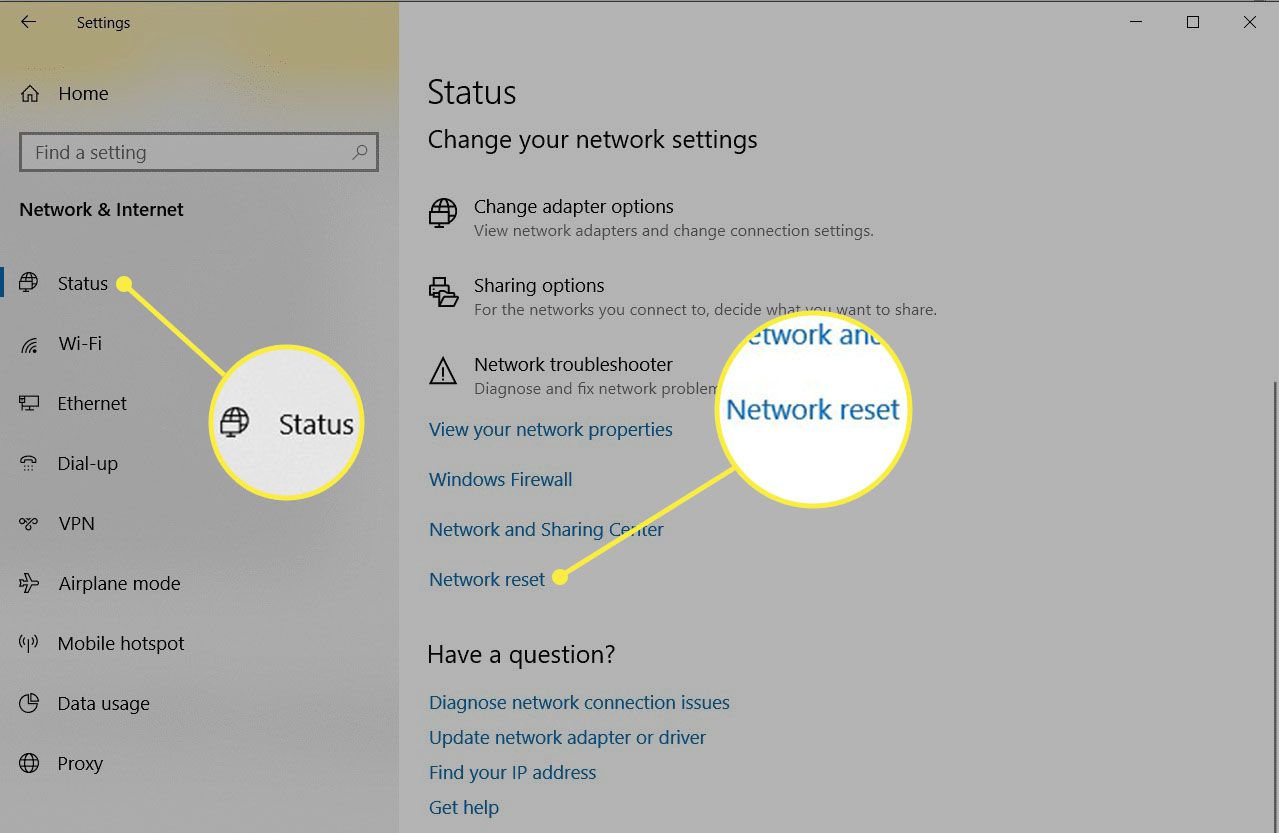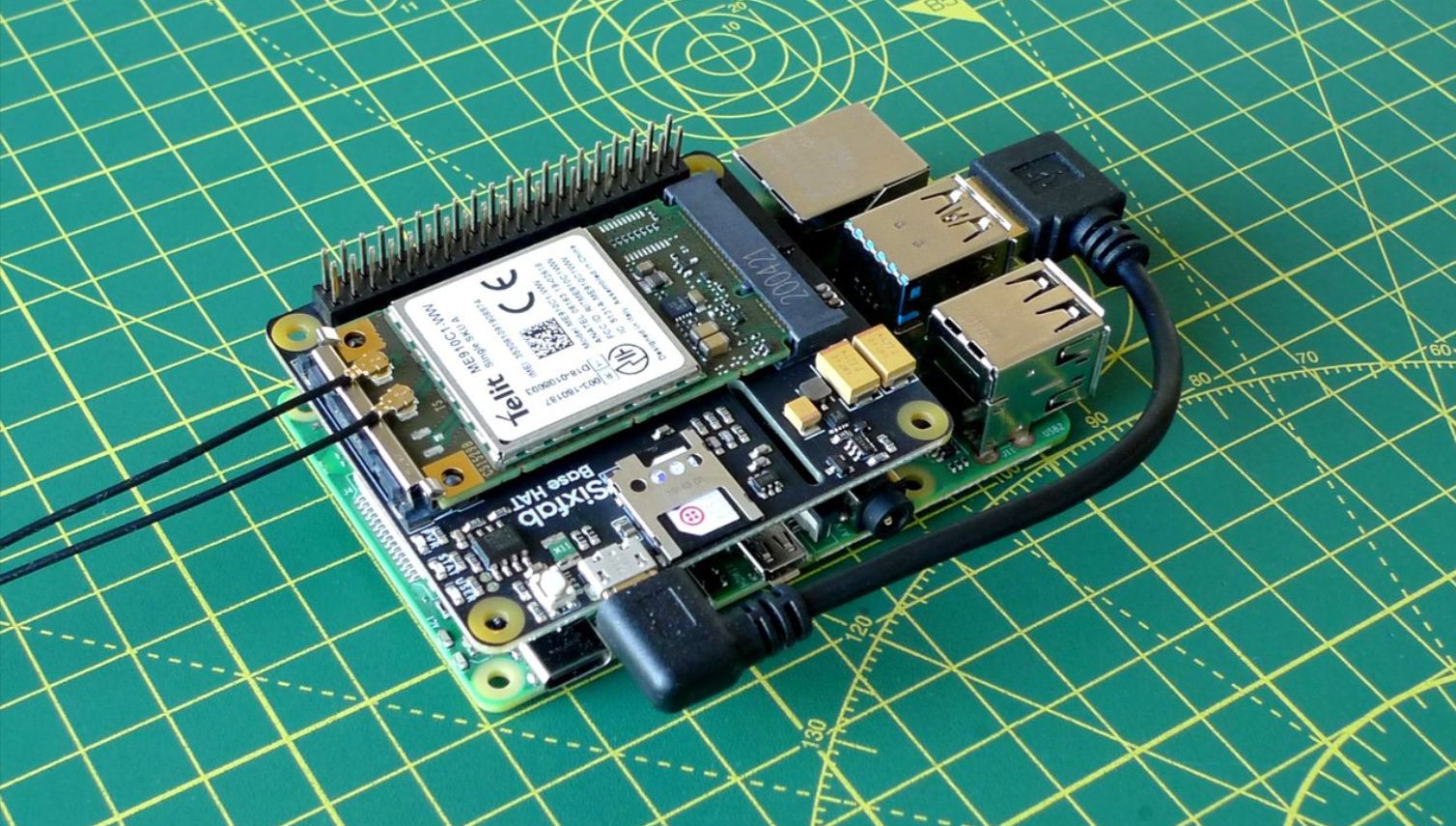Introduction
Welcome to the world of IoT devices! As technology continues to advance, we find ourselves surrounded by a myriad of interconnected devices that make our lives easier and more convenient. From smart speakers to wearable devices, IoT has become an integral part of our daily routine.
However, as IoT devices become more ubiquitous, it becomes increasingly important for users to have secure access and control over these devices. This is where Secure Shell (SSH) comes into play, providing a secure way to remotely connect to and manage IoT devices.
In this article, we will explore the concept of SSH and its significance in the realm of IoT devices. We will discuss why SSH is valuable and how it facilitates seamless communication with IoT devices. Furthermore, we will delve into the steps involved in preparing to SSH into an IoT device and establishing a secure connection.
Whether you are an IoT enthusiast or a developer working on IoT projects, understanding how to SSH into an IoT device is crucial for effective management and troubleshooting. By the end of this article, you will have a solid foundation to confidently SSH into your IoT devices.
So, without further ado, let us embark on this journey to discover the world of SSH and its application in the realm of IoT devices.
What is SSH?
SSH, short for Secure Shell, is a cryptographic network protocol that provides a secure way to access remote systems over an unsecured network. It is widely used in various domains, including IoT, to establish secure communication and manage devices remotely.
The primary purpose of SSH is to enable users to log into remote systems and execute commands securely. It achieves this through encryption and authentication mechanisms that ensure the confidentiality and integrity of the data exchanged between the client and the server.
SSH utilizes a client-server architecture, where the client initiates a connection request to the server, and once authenticated successfully, gains access to the remote system. Unlike other remote access protocols, such as FTP or Telnet, SSH encrypts all communication, including the authentication process, making it significantly more secure.
One of the key features of SSH is its ability to establish a secure shell session, which allows users to execute commands on a remote system as if they were sitting directly in front of it. This feature makes SSH an ideal choice for managing and configuring IoT devices that may not have a graphical user interface (GUI) or are located in remote or inaccessible areas.
SSH also supports various authentication methods, such as password-based authentication, public-key authentication, and certificate-based authentication. Public-key authentication, in particular, is widely used in IoT deployments as it provides robust security by using cryptographic keys instead of passwords to authenticate the client.
Overall, SSH is a vital tool for secure remote administration and management, enabling users to securely access and control their IoT devices. Its encryption and authentication capabilities make SSH an essential component in ensuring the privacy and security of IoT deployments.
Why SSH into an IoT Device?
SSH provides several key benefits when it comes to accessing and managing IoT devices. Let’s explore the reasons why SSH is a valuable tool in the context of IoT:
1. Remote Access: IoT devices are often located in remote or hard-to-reach locations, making it impractical to physically access them for maintenance or troubleshooting. SSH allows users to gain remote access to these devices, eliminating the need for physical presence and enabling efficient management regardless of the device’s location.
2. Secure Communication: IoT devices, especially those connected to critical infrastructure or handling sensitive data, require a secure communication channel. SSH employs strong encryption algorithms, ensuring that all data transferred between the user and the device remains confidential and protected from unauthorized access or tampering.
3. Command Execution: Many IoT devices are controlled and configured through command-line interfaces (CLIs). SSH provides a secure shell session, allowing users to execute commands on the IoT device remotely. This capability is particularly useful for managing multiple devices simultaneously or automating administrative tasks through scripts.
4. Monitoring and Debugging: When it comes to troubleshooting IoT devices, SSH enables users to monitor device logs, debug software issues, and diagnose problems remotely. By accessing the device’s command-line interface, users can gather valuable information, perform system checks, and make necessary adjustments to ensure optimal device performance.
5. Firmware Updates and Configuration: As IoT devices evolve and new features or security patches become available, firmware updates are often required. SSH simplifies the process of updating firmware and configuring IoT devices by allowing users to remotely upload new firmware files, modify settings, and perform necessary configurations without physical access.
6. Enhanced Security: By default, SSH uses cryptographic keys for authentication, providing an added layer of security compared to traditional username-and-password authentication. This makes SSH a preferred method for accessing and securing IoT devices where strong authentication and secure communication are paramount.
Overall, SSH plays a critical role in enabling remote access, secure communication, administration, monitoring, and debugging of IoT devices. Its flexibility, robust security, and command-line interface make it an indispensable tool for IoT device management and maintenance.
Preparing to SSH into an IoT Device
Before you can SSH into an IoT device, there are a few essential preparations that need to be in place. Let’s explore the key steps involved:
- Ensure SSH is Enabled: The first step is to make sure that SSH is enabled on your IoT device. Some IoT devices may have SSH disabled by default for security reasons. Consult the device’s documentation or user manual to find instructions on enabling SSH.
- Obtain the IP Address: To establish an SSH connection, you will need to know the IP address of your IoT device. This can be obtained from the device itself or through the network’s DHCP server. Alternatively, you can assign a static IP address to the device to ensure consistency.
- Verify Network Connectivity: Ensure that your computer or the device you will be connecting from is on the same network as the IoT device. Check that network connectivity is stable and that you can ping the device’s IP address.
- Install an SSH Client: If you don’t have an SSH client installed on your computer, you will need to download and install one. There are several SSH clients available, such as OpenSSH for Linux and macOS, PuTTY for Windows, and various mobile apps for smartphones and tablets.
- Generate SSH Keys: SSH keys provide a more secure method of authentication compared to passwords. Generate a pair of SSH keys on the computer you will be connecting from. The process may vary depending on the SSH client you are using. Make sure to keep the private key secure and never share it.
- Configure SSH Access: On the IoT device, configure SSH access to allow connections from your computer’s IP address or from any trusted IP address. This step ensures that only authorized devices can SSH into the IoT device, improving security.
- Test the SSH Connection: Once all the preparations are complete, it’s time to test the SSH connection. Open your SSH client and enter the IP address of the IoT device, along with your username and password or SSH key for authentication. If everything is set up correctly, you should be able to establish a secure SSH connection to your device.
By following these preparation steps, you will be ready to securely SSH into your IoT device. It’s essential to ensure that each step is done correctly to avoid any connectivity or security issues.
Establishing SSH Connection with an IoT Device
Once you have completed the preparations, establishing an SSH connection with your IoT device is a straightforward process. Let’s go through the steps:
- Launch your SSH Client: Open your preferred SSH client on your computer. This could be the Terminal on Linux or macOS, PuTTY on Windows, or a mobile SSH app.
- Enter the SSH Command: In your SSH client, enter the command to initiate the SSH connection. The command typically follows this pattern:
- Authenticate: Depending on your SSH configuration, you will need to authenticate using either a password or an SSH key. If using a password, enter the password when prompted. If using an SSH key, your SSH client will automatically attempt to use the private key associated with the public key on the IoT device.
- Establish the Connection: Once authenticated, the SSH client will establish the connection with the IoT device. If successful, you will see a prompt indicating that you are now connected to the IoT device via SSH.
- Execute Commands: Now that you are connected via SSH, you can execute commands on the IoT device’s command-line interface. You can perform various tasks such as configuring settings, updating firmware, checking logs, or running diagnostic commands.
ssh [username]@[ip address]Replace [username] with the username for the IoT device and [ip address] with the IP address of the IoT device.
It is important to note that the specific commands and capabilities available will depend on the IoT device and its firmware. Consult the device’s documentation or user manual for information on available commands and functionalities.
Remember to properly manage your SSH connection by securely storing any login credentials or SSH keys and regularly updating your SSH client for the latest security enhancements.
By following these steps, you can establish a secure SSH connection with your IoT device, enabling you to manage and control it remotely.
Troubleshooting SSH Connection Issues
While establishing an SSH connection with an IoT device is generally straightforward, there may be instances where you encounter connection issues. Here are some common troubleshooting steps to help you resolve SSH connection problems:
- Check Network Connectivity: Ensure that your computer and the IoT device are connected to the same network. Verify that you can ping the IP address of the device and that there are no network issues affecting the connection.
- Confirm SSH Enablement: Double-check that SSH is enabled on the IoT device. Verify the SSH server configuration settings and ensure that the device is accessible via SSH.
- Verify Credentials: Make sure that you are using the correct username and password or SSH key for authentication. Check for any typos in the credentials and ensure they match the device’s configuration.
- Check Firewall Settings: Firewalls or security settings on your computer or the IoT device may be blocking the SSH connection. Verify that the necessary ports (usually port 22) are open and accessible.
- Confirm IP Address: Ensure that the IP address you are using to connect to the IoT device is correct. IP address changes or conflicts can prevent successful SSH connections.
- Update the SSH Client: If you are using an SSH client on your computer, make sure it is up to date. Older versions may have compatibility issues or security vulnerabilities that could impact the connection.
- Review SSH Server Logs: Check the logs on the IoT device to see if there are any error messages or indications of connection failures. The device’s documentation may provide guidance on accessing and reviewing the logs.
- Consider Connectivity Constraints: Some IoT devices may have limited processing power or memory resources, which could affect SSH connection stability. Ensure that the device can handle the connection and consider adjusting settings if necessary.
If you have followed these troubleshooting steps and are still unable to establish an SSH connection, it may be beneficial to reach out to the device manufacturer’s support or consult online forums and communities for assistance.
Remember to approach troubleshooting with patience and diligence, as solving SSH connection issues may involve a combination of network, device, and configuration considerations.
Enhancing SSH Security for IoT Devices
As SSH is a critical component in securing remote access to IoT devices, it is essential to take additional steps to enhance the security of your SSH connections. Here are some best practices to consider:
- Disable Password Authentication: Instead of relying on username and password authentication, consider using SSH key-based authentication. This eliminates the risk of brute-force attacks or password guessing. Disable password authentication in the SSH server configuration.
- Generate Strong SSH Keys: When using SSH key-based authentication, ensure that you generate strong and unique SSH key pairs. Use a tool like ssh-keygen to generate keys with a sufficient key length (2048-bit or higher) and consider utilizing passphrase encryption for added protection.
- Implement Two-Factor Authentication (2FA): Consider adding an extra layer of security by implementing two-factor authentication for SSH connections to your IoT devices. This could involve using time-based one-time passwords (TOTP) or hardware tokens in addition to the SSH key.
- Regularly Update SSH Software: Keep your SSH client and server software up to date with the latest security patches and bug fixes. New vulnerabilities may be discovered over time, so staying current helps mitigate potential risks.
- Limit SSH Access: Restrict SSH access to only authorized IP addresses or networks. This prevents unauthorized access attempts and reduces the exposure of the SSH service to potential attacks.
- Monitor SSH Logs: Enable SSH logging on your IoT devices to track and review SSH connection attempts and activities. Regularly analyze these logs for any suspicious or unauthorized access attempts and take appropriate action.
- Enable IP Whitelisting: For an added layer of security, consider implementing IP whitelisting for your IoT devices. This ensures that only trusted IP addresses or ranges are allowed to establish SSH connections, further limiting the attack surface.
- Disable Root Login: Restricting SSH access for the root or administrative account further strengthens security. Instead, create separate user accounts with limited privileges and only provide administrative access when necessary.
- Regularly Audit SSH Configurations: Perform periodic reviews of your SSH configurations to ensure that the settings align with security best practices. This includes checking for any deprecated or insecure protocols and implementing stronger cipher algorithms.
- Secure SSH Key Storage: Safeguard your SSH private keys by storing them in encrypted form and restricting access to authorized individuals. Consider utilizing a password manager or hardware security module (HSM) for secure key storage.
By implementing these security measures, you can significantly enhance the security of your SSH connections and protect your IoT devices from unauthorized access and data breaches.
Conclusion
SSH is an invaluable tool when it comes to securely accessing and managing IoT devices. Whether you are a developer, administrator, or an IoT enthusiast, understanding how to SSH into your IoT devices is essential for effective management, troubleshooting, and security.
In this article, we explored the concept of SSH and its significance in the realm of IoT. We discussed why SSH is valuable for remote access, secure communication, and command execution on IoT devices. We also walked through the steps involved in preparing to SSH into an IoT device and establishing a secure connection.
We covered troubleshooting techniques that can help resolve common SSH connection issues, ensuring a smooth and reliable remote access experience. Additionally, we highlighted best practices for enhancing SSH security for IoT devices, such as disabling password authentication, implementing two-factor authentication, and regularly updating SSH software.
Remember to always prioritize security by following proper SSH security measures, securing SSH keys, and regularly auditing and monitoring your SSH configurations.
SSH not only provides a convenient way to manage IoT devices remotely but also offers the necessary security measures to protect sensitive data and ensure the integrity of your IoT deployments.
With this newfound knowledge and understanding of SSH, you are well-equipped to confidently and securely SSH into your IoT devices, enabling you to effectively control, monitor, and troubleshoot them from anywhere in the world.

























